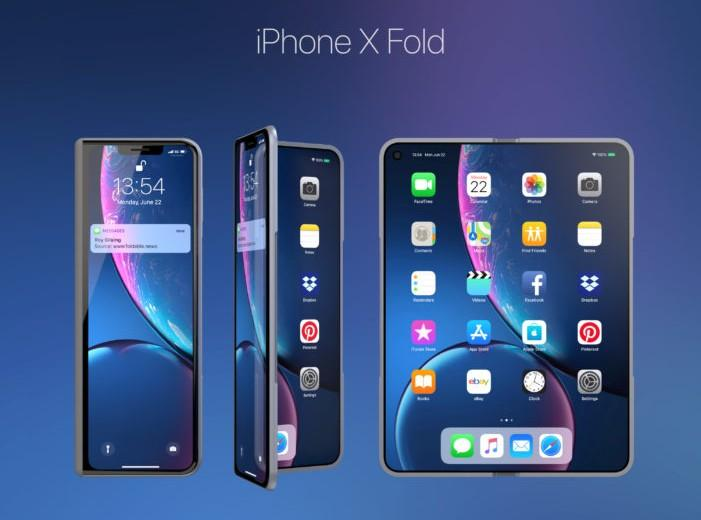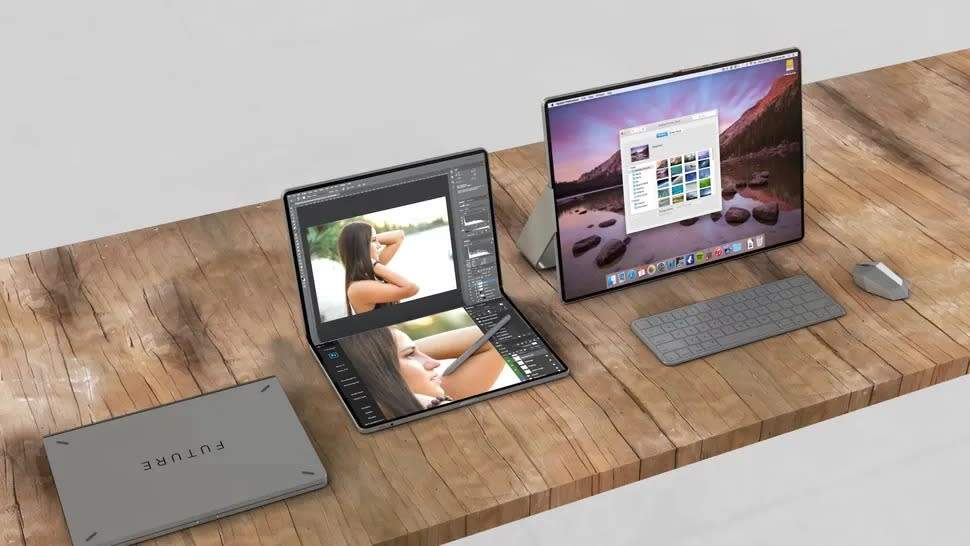Apple iPhone Fold launch may be delayed until 2027 as display details surface online; timelines for iPhone 18e and foldable MacBook also reportedly revealed
Apple iPhone: For years, Apple watchers have waited for the day when the company would bring a foldable iPhone to market. Rival manufacturers have already released several generations of foldable phones, and the pressure on Apple to enter the foldable domain has been mounting. According to a wave of recent leaks and analyst reports, the planned foldable iPhone (often referred to as “iPhone Fold”) is now facing a delay — possibly pushing its debut to 2027. At the same time, Apple’s broader product roadmap, including its next‑gen iPhone 18 line (including an “iPhone 18e”) and even a foldable MacBook, appears to be undergoing strategic adjustments. This article breaks down what we know so far — the display and hinge issues, timeline shifts, impact on Apple’s lineup and what consumers and industry watchers should expect.
1. The Foldable iPhone: What’s the Deal?

1.1 The Promise
Apple’s first foldable iPhone has been rumoured for some time now. Concept renders show a book‑style device: when folded, it acts as a compact phone; when opened, it becomes a larger immersive display. Early reports suggested inner displays of around 7.8 inches or larger. Analysts expected the foldable to arrive in late 2026.
1.2 What’s Causing the Delay?
- A report by Mizuho Securities (via The Elec) says Apple is still finalising key components such as the hinge mechanism and display architecture. The hinge design is critical for durability and usability in a foldable, and Apple appears unwilling to compromise.
- Display panel forecasts have been revised downward. Mizuho cut the expected panel production from 13 million units to 11 million, and then to around 9 million for the foldable iPhone.
- According to leak reports, the outer display may be around 5.38 inches and the inner around 7.58 inches.
- Market research firm TrendForce states Apple is “unlikely to release a foldable phone before 2027” due to technical and manufacturing hurdles.
1.3 Technical Highlights (Leaked)
- Inner display: ~7.58 inches (book‑style fold).
- Outer display: ~5.38 inches (when folded).
- Display supplier: Samsung Display is reportedly supplying the foldable panels.
- Form factor: Likely a “book‑fold” rather than clamshell flip.
- Pricing: Expected to be premium; some estimates around US $2,000+ given component cost and novelty.
2. Timeline Shifts & Impact on Apple’s Roadmap
2.1 iPhone 18 Series & “iPhone 18e”
Apple appears to be restructuring its launch cycles. According to analyst Ming‑Chi Kuo:
- Fall 2026: iPhone 18 Pro, Pro Max, possibly the foldable iPhone and iPhone 18 Air (or Slim) variants.
- Spring 2027: Standard iPhone 18 and an “iPhone 18e” variant (more affordable).
This split strategy would mark a departure from Apple’s traditional single‑event September launches.
2.2 Foldable MacBook / Large Foldable Device
Beyond smartphones, leaks indicate Apple may have a larger foldable device — possibly a foldable MacBook or large‑format device. One analyst note: an 18.9‑inch foldable MacBook planned for 2028/2029 at the earliest.
Another earlier report from tech‑analyst circles says Apple is at least exploring a foldable MacBook with foldable/panel technology.
2.3 What Changed & Why
- Apple’s pipeline: Given the complexity of foldable display and hinge engineering, Apple seems to be pacing itself rather than rushing into the market.
- Competitive timing: Many rivals (Samsung, Huawei, Xiaomi) are already in second or third‑generation foldables. Apple may choose refinement over speed.
- Supply chain constraints: Fewer panels, fewer units means Apple may prefer to debut with limited volume rather than mass release.
- Strategic launch: By staggering launches (Pro/foldable first, standard models later), Apple may attempt to stretch its annual product cycle and keep consumers engaged year‑round.
3. What It Means for Consumers & the Market

3.1 For Apple Fans & Upgrade‑Hunters
- If you were planning to buy Apple’s first foldable phone, be prepared for a potential wait until 2027.
- For those wanting the latest flagship experience sooner, the iPhone 18 Pro/Pro Max in fall 2026 may be the earlier route.
- The “iPhone 18e” could be an interesting entry‑point in early 2027 for budget‑minded buyers.
3.2 For the Foldable Phone Market
- Apple entering the foldable space is likely to boost foldable smartphone adoption again — but the delay gives competitors even more lead time.
- Pricing from Apple will probably be premium initially, which may limit mass adoption initially but could set benchmark quality.
- Suppliers (display, hinge) will benefit, and we may see more innovation in the foldable category as Apple sets new benchmarks.
3.3 Potential Risks & Challenges
- Delay may frustrate fans and influence purchase decisions – e.g., consumers may hold off buying other foldables waiting for Apple’s version.
- Manufacturing constraints could mean limited first‑year supply, which could frustrate demand and cause pricing/premium issues.
- By the time Apple launches, competitors may have refined technology further — so Apple’s version needs to justify the wait.
4. Display & Hinge: The Technical Hurdle
4.1 The Display Challenge
Foldable displays present unique issues: durability (crease resistance), brightness, uniform colour, power consumption, hinge flexibility, longevity of folding cycles. Apple reportedly wants to ensure “best‑in‑class” on these parameters rather than rush.
Display leaks: The inner ~7.58″ panel, outer ~5.38″ panel, both representing large departures from previous iPhones.
Another leak suggests Apple is using Samsung Display’s foldable tech rather than developing wholly new panel architecture.
4.2 The Hinge & Build
Apple’s delay is partly attributed to hinge refinement. The hinge not only has to fold and open reliably but must avoid dust ingress, maintain structural rigidity, ensure minimal visible crease and maintain build quality.
Analyst reports say Apple has not finalised the hinge mechanism and this is contributing to the delay.
4.3 Manufacturing & Yield Issues
Panel manufacturing yields for foldables are lower than traditional displays, and Apple’s demand for flawless finish may raise the bar further. Lower yields → higher cost → potential delay/reduced volumes. Mizuho cut panel forecasts from 13m → 9m units.
Apple may prefer launching with limited units rather than risk a poor launch due to yield issues.
5. Roadmap Summary & Expectations (Verified & Rumoured)
| Product | Rumoured Timeline | Notes |
|---|---|---|
| iPhone Fold | Initially targeted late 2026 → now possibly 2027. | Controlled rollout likely, premium pricing. |
| iPhone 18 Pro / Pro Max / Foldable | Fall 2026 (Sept) | Earlier release compared to standard models. |
| iPhone 18 & iPhone 18e | Spring 2027 | More affordable models, later launch. |
| Foldable MacBook / Large Fold Device | 2028/2029 at earliest. | Mostly exploration stage currently. |
It’s worth noting that all of this is rumoured — Apple has not officially confirmed many of these timelines. But the convergence of multiple analyst notes adds credibility to the shifts.
6. Strategic Implications for Apple
6.1 Splitting Launch Cycles
This could mark a shift in Apple’s product strategy: instead of a single major iPhone launch each year, Apple may move toward two major launch windows — one in fall for flagship/models with innovation, another in spring for more affordable models. This helps maintain buzz, extend shelf life and manage supply constraints.
6.2 Premium Positioning
The foldable iPhone is likely to be positioned as a flagship premium product, perhaps limited in volume initially, further reinforcing Apple’s brand tension toward “premium, best‑in‑class” rather than rush‑to‑market. Pricing likely above US$2,000 initially.
6.3 Ecosystem & Longer‑Term Moves
Apple may be aligning the foldable device not just as a smartphone but part of a broader ecosystem move (iPad, MacBook). If a foldable MacBook arrives later, it could redefine laptop form‑factor. Apple’s ecosystem strength (hardware + software + services) gives it potential to integrate foldable better than others.
7. What Should You Do as a Buyer or Enthusiast?
- If you need a new iPhone now: go ahead with current models (e.g., iPhone 16/17 line) rather than waiting.
- If you were holding out specifically for the foldable Apple device: prepare for a wait until 2027 or even beyond.
- Keep an eye on release announcements in late 2026 (around September) — Apple may surprise with some models but allow cheaper ones in early 2027.
- For those interested in cutting‑edge tech: watch the foldable space (Samsung, Google, etc.). Apple’s version may arrive later but may offer strong build/polish.
- Pricing will matter: since production is expected to be constrained, premium price is likely. Evaluate whether the novelty and ecosystem benefits justify the cost.
8. Risks & What Could Go Wrong
- Delaying too long could allow competitors to further entrench foldable dominance and lead to Apple being seen as a “follower” rather than pioneer.
- If the first foldable unit has design or reliability issues (hinge failures, crease durability, battery life) it could hurt Apple’s brand.
- Supply constraints may limit availability; this may frustrate early adopters and lead to inflated grey‑market pricing.
- The staggered rollout strategy could confuse consumers or lead to cannibalisation of older models.
9. Final Thoughts
The foldable iPhone is one of the most anticipated Apple devices of the coming years, and the fact that Apple is taking its time to get it right says something about its ambition. While the delay to 2027 may disappoint some, it may also mean Apple wants to deliver a product that justifies its premium status rather than rush. The broader roadmap around iPhone 18, the “iPhone 18e”, and possibly a foldable MacBook suggests a period of transition for Apple — both in form‑factor and timeline.
If you’re an Apple enthusiast, the next couple of years will be fascinating: late 2026 may mark the arrival of the foldable iPhone (or at least the Pro/foldable variant), early 2027 the standard/affordable models, and beyond that the ecosystem may expand into entirely new form‑factors. For now, patience seems to be the watch‑word — but the payoff could be significant.
Also Read : Bison Kaalamaadan Box Office Collection Day 1















 Categories
Categories









